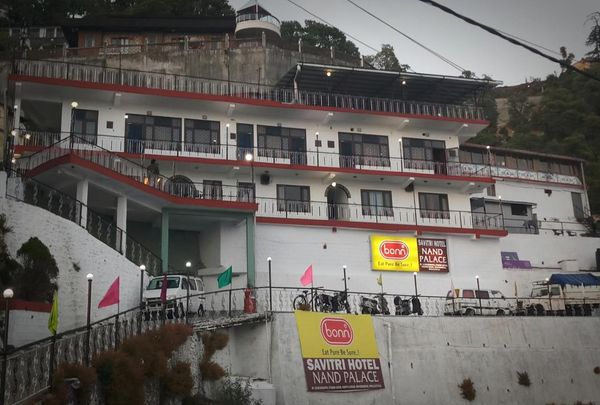Understanding Hook Sizes: Matching Hooks to Fly Patterns
 John Smith
18 Apr, 2025
9 mins read
21
John Smith
18 Apr, 2025
9 mins read
21

Choosing the right hook size is an important step in successful fly tying. Whether you're crafting nymphs, streamers, or dry flies, matching the hook to the fly pattern ensures your creation looks realistic and performs well in the water. This guide will help you understand hook sizes, how they relate to fly patterns, and how to match them correctly—especially when using materials like tungsten beads for fly tying.
What Do Hook Sizes Mean?
Hook sizes can seem confusing at first, but the system is actually simple once you get the hang of it. Standard hook sizes use numbers to indicate size—like 10, 12, 14, 16, etc. As the number gets bigger, the hook itself gets smaller. So, a size 10 hook is larger than a size 18 hook.
You may also see hooks labeled with a number followed by “/0,†such as 1/0, 2/0, 3/0. In this case, the larger the number before the “/0,†the bigger the hook. These sizes are often used for large streamers or saltwater flies.
Why Hook Size Matters
Hook size plays a big role in how your fly looks and acts. A hook that is too large for a fly pattern will make it look bulky and unnatural. If it's too small, it may not hold enough material or be strong enough to hold a fish.
Also, the hook's weight, length, and shape all influence how the fly sinks, floats, or moves in the water. A dry fly tied on a heavy hook might not float properly. A nymph tied on a light hook may not sink fast enough—unless you're using tungsten beads for fly tying, which we’ll talk about more in a moment.
Matching Hook Sizes to Fly Patterns
Different fly patterns are designed to imitate various insects, baitfish, or aquatic life stages. The hook size must match the intended size of the natural insect you're trying to mimic. Here are some general guidelines:
- Dry Flies: These float on the water's surface. Use lightweight hooks, typically in sizes 10–22.
- Nymphs: These sink below the surface and often require added weight. Sizes 10–18 are common.
- Streamers: These mimic baitfish and require larger, stronger hooks. Sizes 4–10 are typical.
- Emergers: These imitate insects transitioning to the surface and may use curved hooks in sizes 12–20.
Understanding Hook Styles and Shank Lengths
Hook styles vary in shape, wire thickness, and shank length (the straight part of the hook). A long shank gives you more room to tie on materials, making it ideal for long-bodied flies. A curved shank is perfect for scud or caddis patterns.
Here are a few common types:
- Standard hooks: Good for many dry and nymph patterns.
- Long shank hooks: Useful for streamers and elongated flies.
- Curved hooks: Great for emergers and scuds.
- Jig hooks: Often paired with tungsten beads for fly tying to create Euro nymphs that ride hook-point up and reduce snags.
How Tungsten Beads Affect Hook Choice
Tungsten beads are a popular material in fly tying. They are much heavier than brass or glass beads, which helps flies sink faster and stay in the strike zone longer. Because of their density, tungsten beads for fly tying are especially useful in fast water or deep pools.
When using tungsten beads, hook size becomes even more important. If the bead is too big for the hook, it may cover the hook eye or throw off the fly’s balance. If it’s too small, it might not add enough weight or look right on the fly.
Matching Tungsten Beads to Hook Sizes
Here is a rough guide to matching tungsten bead sizes with hook sizes:
- 1.5–2.0mm beads: Best for size 18–20 hooks
- 2.5mm beads: Good for size 16 hooks
- 3.0mm beads: Suitable for size 14 hooks
- 3.5mm beads: Work well on size 12 hooks
- 4.0mm beads: Ideal for size 10 hooks and larger
Remember, not all hook brands are the same. Some hooks have larger wire diameters or different shapes that can affect how a bead fits. It’s always a good idea to test-fit your bead on the hook before tying.
Slotted vs. Countersunk Tungsten Beads
Tungsten beads come in different hole designs. Countersunk beads are most common and fit over the bend of standard hooks easily. Slotted beads are designed to fit on jig hooks. These allow the bead to sit correctly on a hook with an angled eye, helping the fly to ride point-up, which reduces snagging on the riverbed.
When tying Euro nymphs or jig-style patterns, always pair slotted tungsten beads for fly tying with jig hooks to get the right look and balance.
Consider the Fly’s Purpose and Environment
Another factor in hook selection is the environment where you’ll be fishing. In fast rivers, you may need a heavier hook and bead combination to get the fly down quickly. In slow-moving water, you might want a lighter hook so the fly drifts naturally.
If you're targeting small, cautious trout, smaller flies on fine wire hooks are best. For aggressive fish or big rivers, larger flies on stronger hooks with heavier tungsten beads may be more effective.
Tips for Beginners
If you're just starting out, don’t stress too much about getting everything perfect. Instead, follow these tips:
- Start with common sizes: Hook sizes 14–18 cover most trout patterns.
- Keep a bead size chart handy.
- Use the same brand for hooks and beads at first, so they match well.
- Practice tying a few patterns in different sizes to see what works best.
- Always check that the bead fits before tying the fly.
Final Thoughts
Hook sizes are a foundational part of fly tying. They affect how your fly looks, moves, and functions in the water. When you understand how to match hook sizes to different fly patterns—and how to properly use tungsten beads for fly tying—you’ll create more effective flies that fish love. Whether you’re tying a delicate dry fly or a heavy Euro-style nymph, the right hook and bead combination is key to success. Take time to experiment with different sizes and styles. Over time, choosing the right hook will become second nature, and your flies will not only look better but also catch more fish. Fly tying is part art, part science, and mastering hook sizes is one of the most important skills you can learn.
Written By:
John Smith



Hotels at your convenience
Now choose your stay according to your preference. From finding a place for your dream destination or a mere weekend getaway to business accommodations or brief stay, we have got you covered. Explore hotels as per your mood.


